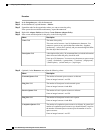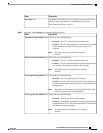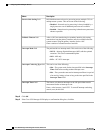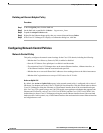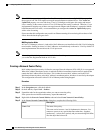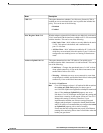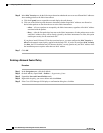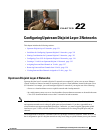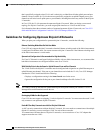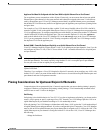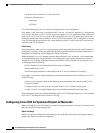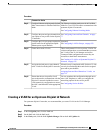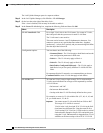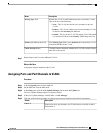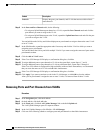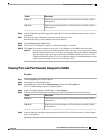
that is specifically assigned to that VLAN, and is selectively excluded from all other uplink ports and port
channels. However, traffic for VLANs that are not specifically assigned to an uplink Ethernet port or port
channel can still travel on all uplink ports or port channels, including those that carry traffic for the disjoint
L2 networks.
In Cisco UCS, the VLAN represents the upstream disjoint L2 network. When you design your network
topology for disjoint L2 networks, you must assign uplink interfaces to VLANs not the reverse.
For information about the maximum number of supported upstream disjoint L2 networks, see Cisco UCS
6100 and 6200 Series Configuration Limits for Cisco UCS Manager, Release 2.0.
Guidelines for Configuring Upstream Disjoint L2 Networks
When you plan your configuration for upstream disjoint L2 networks, consider the following:
Ethernet Switching Mode Must Be End-Host Mode
Cisco UCS only supports disjoint L2 networks when the Ethernet switching mode of the fabric interconnects
is configured for end-host mode. You cannot connect to disjoint L2 networks if the Ethernet switching mode
of the fabric interconnects is switch mode.
Symmetrical Configuration Is Recommended for High Availability
If a Cisco UCS domain is configured for high availability with two fabric interconnects, we recommend that
both fabric interconnects are configured with the same set of VLANs.
VLAN Validity Criteria Are the Same for Uplink Ethernet Ports and Port Channels
The VLAN used for the disjoint L2 networks must be configured and assigned to an uplink Ethernet port or
uplink Ethernet port channel. If the port or port channel does not include the VLAN, Cisco UCS Manager
considers the VLAN invalid and does the following:
• Displays a configuration warning in the Status Details area for the server.
• Ignores the configuration for the port or port channel and drops all traffic for that VLAN.
The validity criteria are the same for uplink Ethernet ports and uplink Ethernet port channels. Cisco UCS
Manager does not differentiate between the two.
Note
Overlapping VLANs Are Not Supported
Cisco UCS does not support overlapping VLANs in disjoint L2 networks. You must ensure that each VLAN
only connects to one upstream disjoint L2 domain.
Each vNIC Can Only Communicate with One Disjoint L2 Network
A vNIC can only communicate with one disjoint L2 network. If a server needs to communicate with multiple
disjoint L2 networks, you must configure a vNIC for each of those networks.
To communicate with more than two disjoint L2 networks, a server must have a Cisco VIC adapter that
supports more than two vNICs.
Cisco UCS Manager GUI Configuration Guide, Release 2.0
322 OL-25712-04
Guidelines for Configuring Upstream Disjoint L2 Networks



